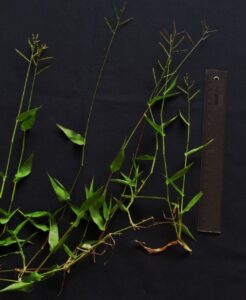Urochloa reptans

Spreading the Green (Literally): Easy Propagation Techniques for Urochloa reptans
Urochloa reptans might sound like a mouthful (and a tongue twister!), but you probably know this plant better as Torpedograss. While often considered a pesky weed, this fast-growing grass can be a valuable addition to the right landscape, particularly in areas prone to erosion. If you’re interested in harnessing its resilience and spreading its verdant growth, you’re in luck! Propagating Urochloa reptans is remarkably simple, even for beginner gardeners.
Let’s explore the two most effective methods:
1. Division: The "Divide and Conquer" Approach
Perhaps the easiest and most intuitive method, division, simply involves separating established clumps of Torpedograss to create new plants. Here’s how:
- Timing is Key: Aim for spring or early summer when the plant is actively growing for best results.
- Dig Deep: Carefully dig around the clump you wish to divide, ensuring you go deep enough to avoid damaging the root system.
- Divide and Conquer: Using a sharp, clean knife or garden spade, slice through the root mass, making sure each division has a good amount of roots and shoots attached.
- Replant and Water: Replant the divisions at the same depth they were originally growing and water them thoroughly.
2. Seed Propagation: From Tiny Grains to Lush Growth
While Torpedograss spreads most aggressively through its robust root system, you can also propagate it from seed. This method requires a bit more patience but can be a rewarding experience.
- Seed Collection: Harvest mature seed heads from existing plants in late summer or early fall. Look for seed heads that have turned a light brown color.
- Prepare for Sowing: You can sow the seeds directly outdoors in spring or start them indoors 6-8 weeks before the last frost.
- Sowing the Seeds: Scatter seeds on the surface of a well-draining seed starting mix and lightly press them in. Keep the soil consistently moist but not soggy.
- Transplantation: Once seedlings have developed a strong root system and the threat of frost has passed, you can transplant them outdoors.
Important Considerations:
- Location, Location, Location: Torpedograss thrives in full sun to partial shade and tolerates a wide range of soil types. However, it does prefer moist, well-drained conditions.
- Invasive Potential: Keep in mind that Urochloa reptans can be highly invasive. Consider using it in contained areas or where its spread can be managed.
From Weed to Wonder
Though often labeled a nuisance, Urochloa reptans possesses incredible resilience and propagation ease. By understanding its growth habits and implementing these simple techniques, you can harness its tenacity and add lush, vibrant green to your landscape. Just remember to be mindful of its potential for spreading and enjoy watching your garden flourish!